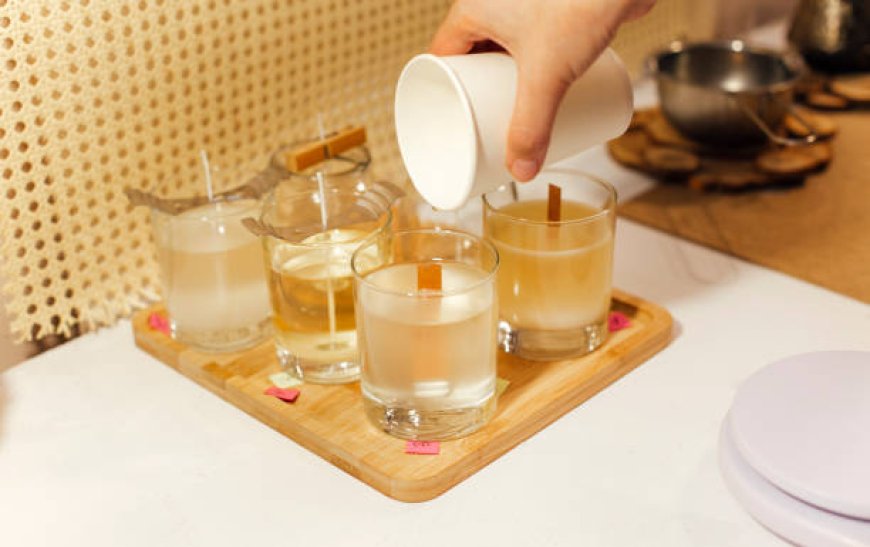Candle Making Safety Tips Every Beginner Should Know

Candle making is a fun and creative hobby that can even turn into a potential business venture. Beyond choosing the right candle making supplies, beginners have to learn how to use them safely. Here is more information about the process, from selecting the right type of wax to finding proper storage, to help you craft your own candles at home:
Purchasing Candle Making Supplies
Before you start thinking about melting wax, you’ll need supplies that are labeled and tested for candle making. Those tools are made to withstand high temperatures and contain quality ingredients. Obtaining high-quality materials enables you to craft candles that are clean-burning and safe. Here are some of the basic candle making supplies you’ll need, apart from wax and wicks:
-
Thermometer: Each type of wax, such as soy and paraffin, must be melted within specific temperature ranges. If the wax gets too hot, the fragrance oil may burn off, resulting in a loss of scent.
-
Pouring Pitcher: It allows you to melt the wax gradually by using indirect heat. You’ll be able to melt the wax gradually and thoroughly, avoiding material wastage.
-
Safety Gloves and Glasses: Gloves can protect your hands from both hot wax splashes and sticky fragrance oils. If you’re working with large batches, protective glasses or goggles are necessary when pouring wax.
-
Molds and Jars: You’ll need containers that are heat-resistant and can handle repeated heating and cooling without cracking or warping. Silicone molds, metal tins, and glass jars are all good options for candle pouring.
Melting Wax Safely at Home
Melting wax correctly can enhance your candle's fragrances, textures, and final appearance. To melt it safely, avoid using a regular pot or microwave, as it can lead to overheating, which emits fumes and increases the risk of burning the wax. One of the safest ways of melting wax is by using indirect heat with a pouring pitcher and a pot of simmering water. Track the temperature with the thermometer, following product-specific instructions to know what the melting point is for the type of wax you’re using.
Soy wax provides smooth finishes with a clean burn and is made from plant-based ingredients. If you’re looking to make candles that have strong fragrances and vibrant colors, paraffin might be a better option. Beeswax tends to have a long-lasting burn time and honey-like aroma. Each wax type behaves a little differently, so you can choose the one that best fits your project.
Choosing the Right Containers and Wicks
Heat-resistant containers enable you to create candles that are both safe and visually appealing. You can opt for candle making supplies and containers, such as aluminum tins, ceramics, or tempered glass jars, which tend to have high heat resistance. The container’s size could affect how the candle burns. Wider containers may require multiple wicks to melt the surface more evenly, while narrower ones necessitate a thinner wick to prevent the candle from burning too hot.
There are various wick materials, including cotton and wood, available in different sizes. Choose the wick according to the container’s size. A thicker wooden wick may work better for larger jars when using soy wax, as it tends to melt more slowly. If you’re working with paraffin wax, you might get better results using thinner wicks, as paraffin wax requires less heat to burn.
Storing Your Homemade Candles
Once they’re ready, your candles should be kept in dry, cool places, away from direct sunlight. Keep the containers upright and tightly sealed whenever possible to prevent dust infiltration and scent loss. If the container doesn’t have a lid, you can use plastic wrap to keep them clean and protected. Keep the jars on high shelves so that children and pets cannot reach and knock them over.
Learn More About Candle Making Safety Tips
Whether you’re planning to sell, keep, or give them as gifts, labeling your candles helps you keep them organized. Add a proper warning label sticker to the candles if you’re selling them. You can obtain these stickers in various sizes, which include instructions on how long to let the candle burn, wick trimming, and storage. Use personalized labels to add your brand’s name, scent, wax type, weight, and any other information you might think is relevant. Stock up on beginner-friendly candle making supplies today.







